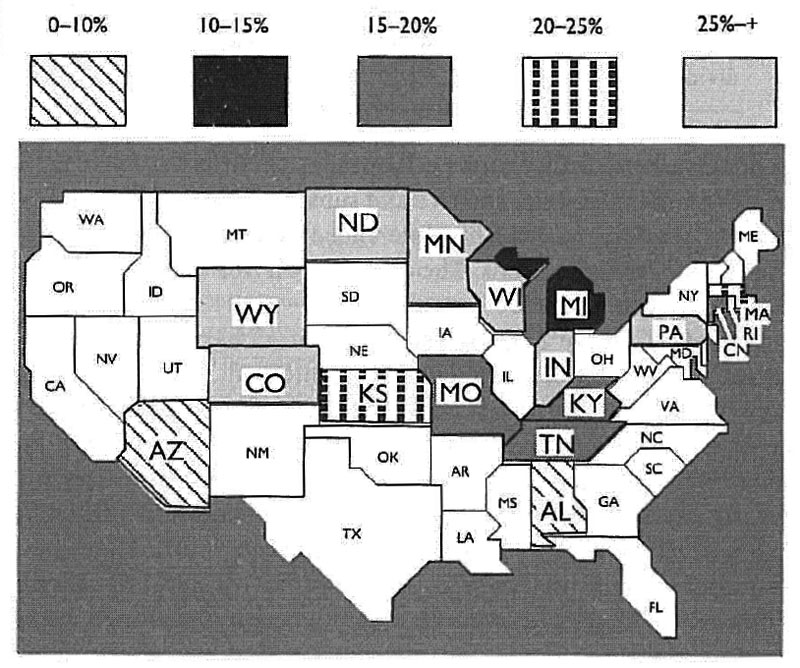Teaching:TUW - UE InfoVis WS 2007/08 - Gruppe 07 - Aufgabe 3: Difference between revisions
Jump to navigation
Jump to search
No edit summary |
No edit summary |
||
| Line 7: | Line 7: | ||
== Used terminology == | == Used terminology == | ||
In this section, we will try to explain several terms used through the rest of the article. | In this section, we will try to explain several terms used through the rest of the article. | ||
* ''' Data-ink ''' - Data-Ink is a ratio that specifies how much of the visual presentation in a graphic really describes some concrete data. The equation looks something like this: '' data-ink / all-ink = data-ink-ration''. The value of | * ''' Data-ink ''' - Data-Ink is a ratio that specifies how much of the visual presentation in a graphic really describes some concrete data. The equation looks something like this: '' data-ink / all-ink = data-ink-ration''. The value of a data-ink ratio always lies between 1 and 0, the bigger the number, the better. The goal is not to eliminate all visual elements that doesn't have anything to do with the data directly but to minimize ''unnecessary visual data''. | ||
== Links == | == Links == | ||
Revision as of 01:07, 5 December 2007
Assignment description
Assigned Graphic
 Established Percentage of Homes that Exceed EPA's Recommended Level for Radon
Established Percentage of Homes that Exceed EPA's Recommended Level for Radon
Used terminology
In this section, we will try to explain several terms used through the rest of the article.
- Data-ink - Data-Ink is a ratio that specifies how much of the visual presentation in a graphic really describes some concrete data. The equation looks something like this: data-ink / all-ink = data-ink-ration. The value of a data-ink ratio always lies between 1 and 0, the bigger the number, the better. The goal is not to eliminate all visual elements that doesn't have anything to do with the data directly but to minimize unnecessary visual data.